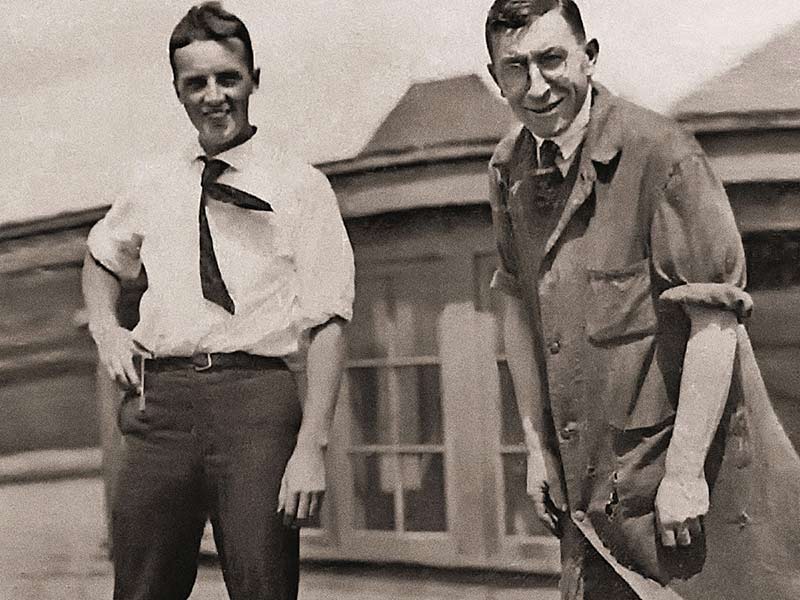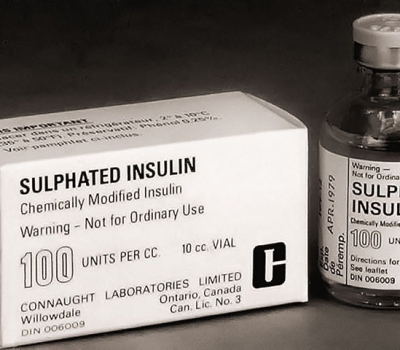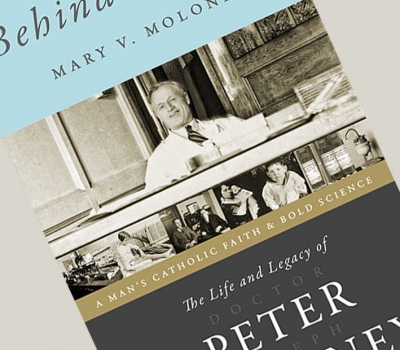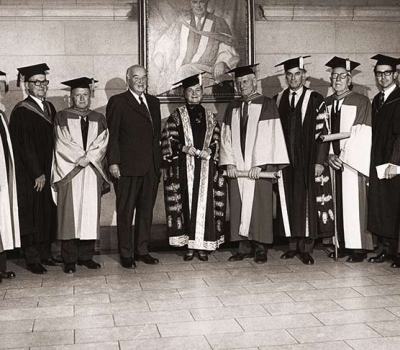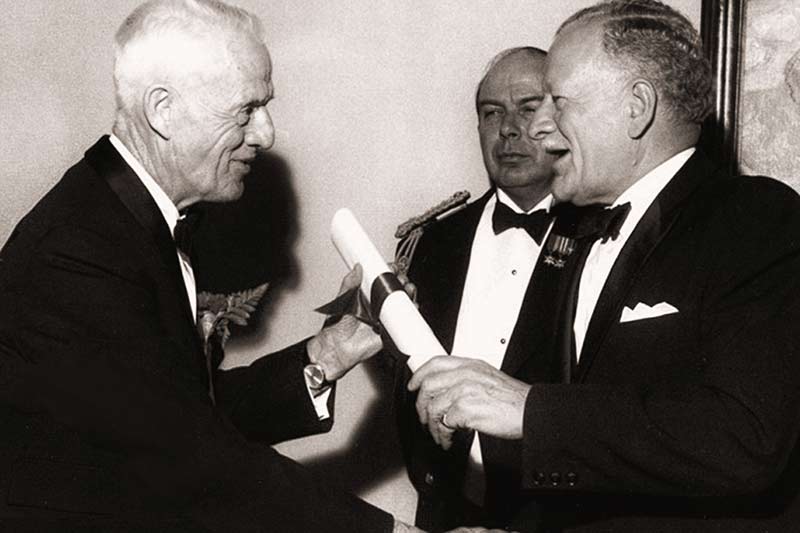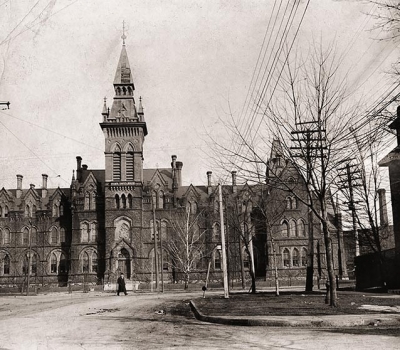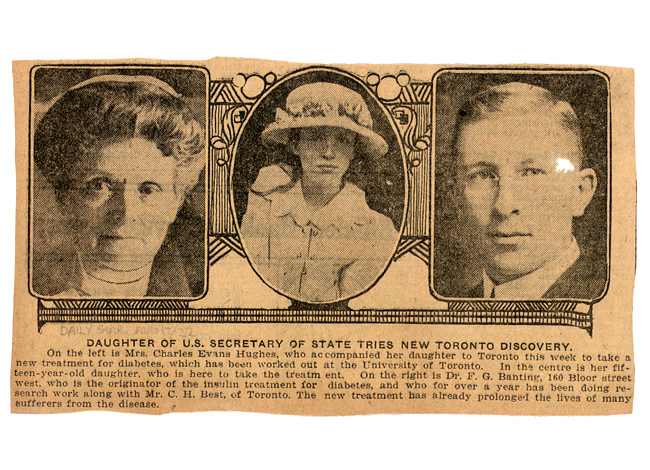 Meanwhile, mothers all over the globe were writing him heart-wrenching letters: “My dear Dr. Banting: I am very anxious to know more of your discovery,” wrote one, going on to describe her daughter’s case: “She is pitifully depleted and reduced.”
Meanwhile, mothers all over the globe were writing him heart-wrenching letters: “My dear Dr. Banting: I am very anxious to know more of your discovery,” wrote one, going on to describe her daughter’s case: “She is pitifully depleted and reduced.”
Every few months some miracle drug or other is rolled out with bells and confetti, but only once or twice in a generation does the real thing come along.
These are the blockbuster medications that can virtually raise the dead, and while the debuts of some, like the AIDS drugs, are still fresh in memory, the birth of the first one is almost forgotten. It was injectable insulin, long sought by researchers all over the world and finally isolated in 1921 by a team of squabbling Canadians. With insulin, dying children laughed and played again, as parents wept and doctors spoke of biblical resurrections.
But the miracle went only so far: insulin was not a cure. In 1921, New York City’s death rate from diabetes was estimated to be the highest in the country, and today the health department lists diabetes among the city’s top five killers. Now though, it is adults who die, not children. What insulin did was turn a brief, deadly illness into a long, chronic struggle, and both the exhibit and the book, “Breakthrough,” by Thea Cooper and Arthur Ainsberg, on which it is based highlight the complicated questions that inevitably follow medical miracles: Who will get the drug first? Who will pay for it? Who will make enough for everyone? And, of course, who will reward its developers as they feel they deserve?
In the first decades of the 20th century, half a dozen different research groups were hot on the trail of insulin, a hormone manufactured in the pancreas but difficult to separate out from the digestive enzymes also made there.
Without insulin the body is unable to use glucose, its primary fuel. Most diabetic children lack insulin completely, while adults with so-called Type 2 diabetes often associated with obesity are resistant to the hormone’s action. Either way, sugar and starch in the diabetic’s diet turn into poison, clogging the bloodstream with unusable glucose: the glucose is eliminated in sweet-tasting urine as the body’s cells literally starve in the midst of plenty. Insulin-deficient patients are both thirsty and ravenous, but the more they eat, the faster they waste away.
Before insulin was available, doctors understood enough of this sequence to cobble together a stopgap treatment: diabetics were put on salad- and egg-based diets devoid of sugar and starch, with only the minimum number of calories needed to survive. Already thin, these patients became skeletal, but the excess glucose disappeared from their blood and urine, and they survived far longer than untreated contemporaries.
Dr. Elliott Joslin, whose Boston clinic was and remains a renowned diabetes center, recalled that before insulin one of his dieting patients was “just about the weight of her bones and a human soul.”
The other great authority on diet therapy was New York’s Dr. Frederick Allen, now long forgotten, who founded a residential hospital for diabetics, first on East 51st Street in Manhattan, and then in rural New Jersey.
It was to Dr. Allen that the eminent American jurist and Supreme Court justice Charles Evans Hughes turned when his daughter Elizabeth was diagnosed with diabetes in 1919, at age 11.
Elizabeth Hughes was a cheerful, pretty little girl, five feet tall, with straight brown hair and a consuming interest in birds. On Dr. Allen’s diet her weight fell to 65 pounds, then 52 pounds, and then, after an episode of diarrhea that almost killed her in the spring of 1922, 45 pounds. By then she had survived three years, far longer than expected. And then her mother heard the news: insulin had finally been isolated in Canada.
The unlikely hero was Frederick Banting, an awkward Ontario farmboy who graduated from medical school without distinction, was wounded in World War I, then more or less forced himself into a laboratory at the University of Toronto with an idea of how to get at the elusive substance. Over the miserably hot summer of 1921 Dr. Banting and his assistant Charles Best experimented on diabetic dogs, with only limited success until finally dog No. 92, a yellow collie, jumped off the table after an injection and began to wag her tail.
Meanwhile, Dr. Banting’s mentor and lab director, Dr. John J. R. Macleod, was summering in Scotland.
Dr. Banting never forgave Dr. Macleod for arriving back in the autumn, rested and refreshed, and taking over. His bitter hostility lasted years, long after the Nobel Prize ceremony in 1923 which Dr. Banting refused to attend, for although he shared the physiology prize with Dr. Macleod, he would not share a podium.
Meanwhile, mothers all over the globe were writing him heart-wrenching letters: “My dear Dr. Banting: I am very anxious to know more of your discovery,” wrote one, going on to describe her daughter’s case: “She is pitifully depleted and reduced.”
That was from Elizabeth Hughes’s mother, Antoinette. Charles Evans Hughes had by that time temporarily left the Supreme Court, and was serving as secretary of state in President Warren G. Harding’s administration. Dr. Banting, unimpressed, replied no, sorry, no insulin available — for, in fact, the team was having difficulty making enough for more than a handful of patients.
And then a few weeks later, Dr. Banting changed his mind.
Presumably higher powers had intervened, or perhaps Justice Hughes himself — a rigid, unsmiling man whom Theodore Roosevelt had nicknamed “the bearded iceberg” — had pulled strings. Either way, Elizabeth traveled posthaste to Toronto and the lifesaving injections.
It was the end of her journey, but only the beginning for many children without her connections, who had to wait while the Canadians fought bitterly with each other over how to fairly distribute their tiny amounts of the lifesaving substance.
Dr. Banting wound up giving one of his colleagues a black eye before it was all over, and Eli J. Lilly and Company, the Indianapolis pharmaceutical firm, won the right to mass-produce insulin. It was the first partnership negotiated among academia, individual physicians and the pharmaceutical industry.
When the first combinations of AIDS drugs proved to save lives in just the same seemingly miraculous way, Dr. Kent Sepkowitz, an infectious disease expert at Memorial Sloan-Kettering Cancer Center in New York, was moved to look up the old literature on the discovery of insulin and found many parallels between the two eras.
“In some sense, the breakthrough is the easy part,” he said. “Then the real work begins.”
For both insulin and the AIDS drugs the big challenge was “getting it from here to there,” Dr. Sepkowitz said. The expense and logistics of large-scale insulin manufacture were initially daunting. But soon trainloads of frozen cattle and pig pancreas from the giant Chicago slaughterhouses began to arrive at Lilly’s plant. By 1932 the drug’s price had fallen by 90 percent.
Meanwhile, the notion of allowing patients to test their own urine for glucose and calculate their own insulin doses was outlandish to most doctors. Diabetes was the first illness which forced them to cede some medical authority to the patient, said Jean Ashton, one of the exhibit’s curators. With insulin, diabetics suddenly acquired both the right and the responsibility to maintain their own health.
Some of the children who were early recipients of insulin became diabetes advocates, speaking out for patients’ rights well into their old age.

